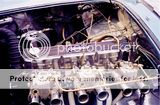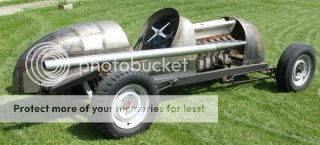Seattle Smitty":sbjrd7mz said:Well, lah di dah.
The Ford big six is as modern as I want.
Me too Smitty, and I use the funtionality and features of this modern world more than most of us...
Seattle Smitty":sbjrd7mz said:Well, lah di dah.
The Ford big six is as modern as I want.
 Hi SS.Times 20.The more"features",the more things to crap out.
Hi SS.Times 20.The more"features",the more things to crap out.Seattle Smitty":3i8zc2oz said:I
The Austin Mini of the 1960s weighed, what, 1400lbs? It was simple as sin, had no "features", used one of the crudest little pushrod fours of the time, could break any speed limit in the USA with ease, and got 40-42mpg.
The new Mini gets 23mpg, and weighs THREE THOUSAND TWO HUNDRED POUNDS (I had a Dodge Dart that was twice as long and had a cast iron six, that weighed about that much). Oh my, but does it ever have "features"! And four valves per cylinder! Overhead cams! Computer-controls of everything!
E4ODnut":8fnw0roo said:On the Jag DOHC six. I really don't think that they are a contender for best over all, but as for best looking? In my opinion, nothing else even comes close. With polished aluminum castings these things are pure art. I'd have one sitting on the floor of my living room if my dear sweet wife would allow.




 from the last four eye beasts
from the last four eye beasts




 )
)Nashtooth":17e1ll01 said:My 84 E 150 is a 6 x 6. Too bad it loves fuel.
russk":vbnigicd said:Guys:
I don't know if it is the "best" inline six but the "Big" and "Little" sixes built by Offenhauser between 1937 and the very early '40s would be the one(s) I'd actually like to own. The "Big" six was a supercharged twin-cam two-valve jewel displacing 337ci. The "Small" six was essentially a six cylinder version of the Offy 4-banger with twin-cams and 4-valve configuration displacing 260ci. If I could lay my hands on one of these engineering masterpieces, that would be my choice, hands down.

Firepower354":19d08u5z said:Norwood/Batten DOHC inline was swell.
